If you have children or are about to have them, you should know that a large part of the monthly budget from their birth and during their first two or three years, will go to the purchase of diapers. More and more parents are looking for offers without neglecting the quality of this essential product and, to help in this complicated task, we have prepared a selection of the best diapers on the market and a guide to clarify the aspects to take into account when buying diapers for your baby .
For at least the first two years of your little one, diapers will be a regular purchase and one of the inevitable expenses of each month, so you have to take into account the price but always looking for the best quality and the right type in each stage of your baby. According to data from the Organization of Consumers and Users (OCU) , a child uses between 3,000 and 5,700 diapers from birth to the next phase of growth. Do the math: this amounts to between 900 and 1,900 euros per child.
To help you choose well, we have prepared a selection of the best diapers on the market and a guide so that you are very clear about what to look for when buying, how to know the right diaper size and much more.
Table of Contents
Our Top Picks
Image | Model | Features | |
Best for Heavy Wetters Huggies Ultra Comfort |
| ||
Best for Biodegradation Pingo |
| ||
Best for Sensitive Skin Bambo Nature |
| ||
Best for Baby Skin Eco By Naty |
| ||
Best for Day & Night Pampers Baby Dry |
| ||
THE 5 BEST BABY DIAPERS REVIEWS ACCORDING TO PRODUCT EXPERTS AND REAL PARENTS
5. BAMBO NATURE
An ecological diaper for environmentally conscious parents.
-
-
-
-
-
-
- Biodegradable materials and no artificial chemicals
- Dermatologically tested
- Very good breathability
-
-
-
-
-
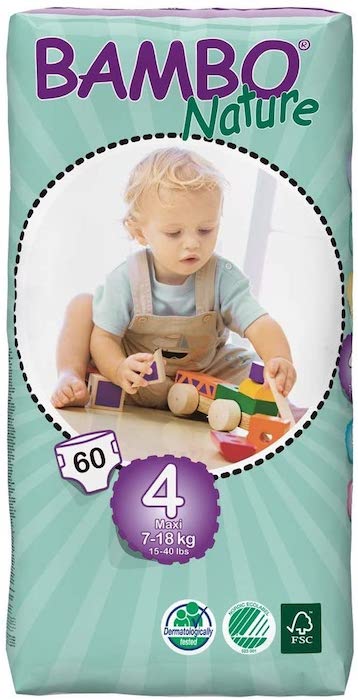
Bambo Nature diapers are a great choice if you are concerned about the environment. Did you know that a conventional diaper takes more than 300 years to decompose ? That means that 12 generations from now, your little one’s diapers will still be on the planet.
Bambo Nature diapers take only 7 years to disappear . And, unlike other diapers, Bambo Nature is FSC certified , which guarantees that the cellulose used comes from responsibly managed forests. In addition, the absorbent you use is made from wheat starch and is also biodegradable.
No artificial chemicals
On the other hand, it does not contain artificial chemical components . No chlorine, perfumes or toxic compounds that contribute to the degradation of the environment or that can harm the health of your baby.
But Bambo Nature isn’t just good for the planet; We have verified that its design is designed for the well-being of your baby.
The diaper has a very soft texture to avoid chafing and elastic side bands to adapt to your body and make you feel comfortable at all times.
Dermatologically tested
For us it is also important that it is a dermatologically tested diaper that incorporates a special design in the back area that prevents excess moisture in that area, preventing annoying irritations on your baby’s skin.
Pros
- They are ecological
- Contains no artificial chemicals
- They have a special anti-humidity design on the back
Cons
- They are somewhat more expensive than “normal” diapers
Diapers for parents looking for a classic brand to accompany them throughout their baby’s development.
-
-
-
- Good fit to the baby’s body and quick absorption
- Soft cotton-like touch
- Available up to 25 kg
-
-
Pampers Baby-dry is one of the brand’s models that has been in this sector for the longest time. In fact, it was Mr. Pampers himself who invented them in 1960, so with this brand you go to the origin of disposable diapers. After 60 years manufacturing diapers, they know something and it shows.
The first thing we see in the Pampers Baby-dry is its outer layer printed with raised drawings and the elastic sides that adjust to the body of your baby while he moves with total freedom.
Texture
Despite being made of synthetic material, the layers of this diaper have a soft touch reminiscent of cotton and have a good combination between them, since the micro pores allow air to pass through while the absorbent channels distribute moisture and the microbeads do not they let nothing escape.
We have been struck by the extra sleep absorbent layer that retains moisture very well in the core to prevent it from being in contact with the skin and your baby can sleep peacefully (and you can hurry a little) even if the diaper has wet. In addition, the side barriers prevent possible leaks that moisten your crib and prevent you from resting.
See Price on Amazon
Sizes
We liked that it has sizes available up to 25 kilos, because if they suit your little one, he can use them for many years while he needs them to sleep safely.
Pros
- Sizes available up to 25 kg
- Extra absorbent layer to wear at night
Cons
- A little more expensive than average
3. ECO BY NATY
Plant fibers and biodegradable material for an eco and vegan diaper that cares for the most sensitive skin.
-
-
-
-
-
- 100% biodegradable
- No artificial chemicals and not tested on animals
- Hypoallergenic
-
-
-
-
Eco by Naty is one of the safest diapers for your baby’s skin and also for the environment.
It is made from vegetable fibers , so there is no petroleum-derived plastic component in contact with the skin. It also does not contain other materials such as dioxins, perfumes, phthalates or parabens that can be harmful to your little one.
If your baby has any type of allergy or tendency to skin irritations, Eco by Naty is a perfect diaper for him, since the OEKO-TEX Standard 100 certification guarantees that none of its components are harmful to his health .
See Price on Amazon
Absorption
The absorbent core of this diaper is composed of cellulose pulp from 100% sustainably managed forests. This way you take care of the planet while keeping your little one dry, and without the need to incorporate SAP (an artificial polymer) that can cause skin reactions.
Vegan and biodegradable
Eco by Naty is a vegan diaper , not tested on animals and made primarily with bio-based ingredients. In fact, you can throw them into the organic waste container, since both the diaper and the container are 100% biodegradable .
We really like that these diapers are so conscientious with the care of the environment but we have found them somewhat rigid when using them. In addition, special care must be taken when placing them to avoid leaks.
Pros
- They are ecological, biodegradable and vegan
- Contains no artificial chemicals
- They do not irritate the skin
Cons
- Price slightly higher than “conventional” diapers
- They are a bit stiff and must be positioned well to avoid leaks
2. PINGO
An extra absorbent diaper for parents looking to perform well without neglecting the environment.
-
-
-
-
-
- Four ecological certifications
- No chlorine, PVC, perfumes and phthalates
- Ideal for sensitive or atopic skin
-
-
-
-
Right away you will see that Pingo diapers are not like most diapers.
For starters, it is presented as the brand for parents who want to have a positive impact on the world. And it is that:
- They have 4 ecological certifications that show that they really put their green philosophy into practice.
- They only use cellulose from responsibly managed forests.
- The outer part of the diaper is made with 85% renewable components and the packaging is made of recyclable bioplastic.
But Pingo also has other characteristics that have caught our attention, such as its absorption capacity , 25% higher than usual and demonstrated in a laboratory. This is very remarkable, because diapers that use natural fibers tend to absorb slightly less than those that use chemical compounds. In this case, we have been able to notice that the diapers last longer between changes. So your baby will be dry longer while sleeping or playing.
And if you are concerned about possible leaks that are usually more frequent in eco diapers, the protection bands fit well to the body and will avoid this problem.
Anti-allergens
These diapers are anti-allergenic , which is important if your little one has atopic skin or multiple chemical sensitivities , so they may be a good choice for him. We find it interesting to mention that they have passed the «Original Dermatest Excellent» dermatological test and are made with materials free of chlorine, PVC, perfumes, phthalates and other endocrine disruptors.
Pros
- Ecological (even the packaging is biodegradable)
- Absorption above average
- Protection bands that prevent leaks
- Respond well to atopic and sensitive skin
Cons
- Like all “green” diapers, it shows in the price
- They are a bit stiff
An ergonomic and absorbent diaper that does not have a “bag” effect.
-
-
-
-
-
- Thin diaper that swells very little
- Ultra-fast absorption and good breathability
- With vitamin E, aloe vera and chamomile
-
-
-
-
The Huggies Ultra Comfort has achieved one of the highest scores in the OCU test this year and we understand that it is so, since it has some characteristics that make it stand out, both in comfort and in baby care.
Forget about uncomfortable diapers that do not allow your child to move freely. Huggies has a narrower anatomical design on the legs, and we have seen that running around is much more comfortable for our baby than with other diapers.
Absorption
In addition, if we take into account its absorption capacity, we are surprised how thin this diaper is. And no bag effect because it swells very little . We also like that it barely smells.
But fear not because, even if it does not swell or pass through the smell, you will quickly know if you have to change your little one with the color indicator for urine . When it’s time to change, you will see that the side zipper is very thin and easy to remove.
Technology Dry Touch of ultrafast absorption and air channels will keep your little one dry longer, though perhaps at night can fall a little short. In addition, its elastic waist allows you to move freely without the risk of leaks.
For delicate skin
If your baby has delicate skin, this diaper provides extra protection with vitamin E, aloe vera and chamomile.
But, yes, keep in mind when choosing the size that you should pull low, because these diapers are designed for rather large babies. For example, size 6 is especially comfortable for big babies.
Pros
- Comfortable ergonomic design
- No bag
- Good absorption for how finite it is
- Urine indicator
Cons
- Absorption may fall short at night
- Larger size than usual (be careful when choosing the size)
RECOMMENDED BABY DIAPERS
THE BEST ECO-FRIENDLY DIAPER: PINGO
Most bio diapers sacrifice absorption for ecology. But in the case of the Pingo, both characteristics are perfectly combined.
As for the green part , they have 4 recognized ecological certifications , they do not use chlorine, PVC, perfume or petroleum derivatives.
But not only the visible part is ecological; to the absorbent cellulose diaper comes with its own certificate of environmental responsibility, attesting that the wood that is manufactured comes from forests managed in a manner 100% sustainable.
This is all great but what about everyday use? Well, in Pingo they have made an extra effort so that the absorption is excellent and do not miss the microbeads or artificial fabrics that other diapers use, with their corresponding impact on the environment.
This is noticeable in the price and they are not the cheapest diapers on the market. But that little extra will be appreciated by your conscience and also by your baby’s skin , since you save yourself many risks of allergies and eczema.
GUIDE TO BUYING BABY DIAPERS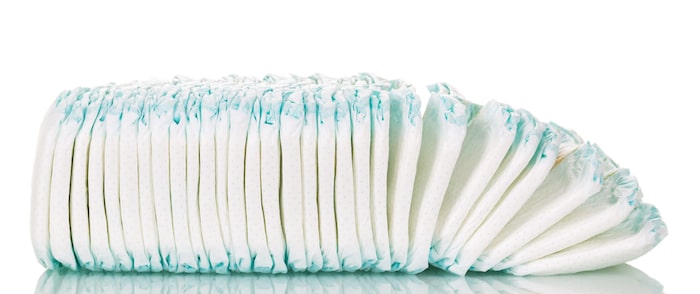
Knowing which is the best diaper is a question that many parents want to solve. There is a wide variety of diapers on the market and it is important to bear in mind that we must choose those that, in addition to lasting longer, are adjustable and soft , at the same time that they adapt to all stages of the baby’s growth .
Your little one is unique and what works for others may not work for you . When talking with other parents, you will already know that there are fans of a specific brand (even if you don’t like it at all) or that each one has their tricks, which are not always universal.
Therefore, if with so much information and variety you are not sure, try to get a sample . In the midwife’s office, at the pediatrician or at the pharmacy they may have some. They also make a gift from time to time in specialized baby magazines. If not, it is best to buy a small package to start with and thus see if it suits what your baby needs and convinces you. Once you know which diaper is the right one, it is best to order a monthly pack, which is cheaper .
- Sizes. It is very important to monitor the size of the diaper that the baby will use at all times, since a diaper that is too large will leak and one that is too small will be uncomfortable . Babies grow very fast, especially in the first months, so a good advice is not to make a large stock of newborn diapers because it is very possible that, before using them, you will have to change size. So at this stage, it is better to buy them little by little.
- Rapid absorption to avoid as much as possible the contact of urine with the skin and thus avoid the dreaded irritations.
- Quality of closures . The more resistant they are, the better: it is very important that these adhesives allow you to stick and remove several times to be able to see how the diaper is inside.
- Anti-leak barriers . When the child fidgets or crawls, the pee may leak through the corners or creases of the diaper. These reinforcements must be elastic so as not to limit the movements of the child, who is in the process of learning to relate to his body and evolve in his development.
- Allergy care : baby’s skin is very delicate and many of them develop atopic dermatitis , a condition that is not serious but requires extra effort in caring for the baby. To better protect this type of sensitive skin, baby diapers must be dermatologically tested: therefore, some of them include ingredients such as aloe vera, which help prevent diaper irritations.
TYPES OF BABY DIAPERS
Normal Diapers (Disposable)
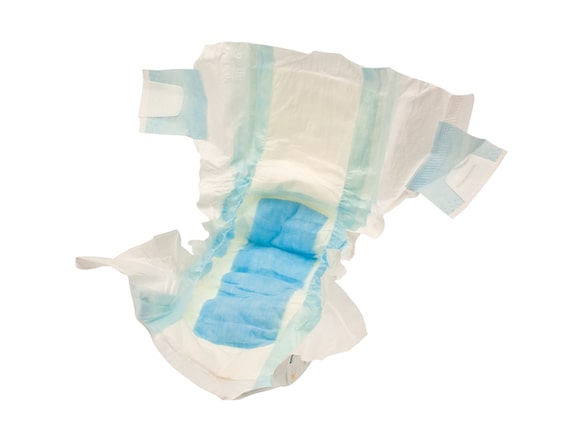 Shaped like an hourglass to fit your baby’s body, disposables are the best seller of diapers. They are the easiest to locate in almost any store and, even if you use another type, it is useful to have them on hand for emergencies.
Shaped like an hourglass to fit your baby’s body, disposables are the best seller of diapers. They are the easiest to locate in almost any store and, even if you use another type, it is useful to have them on hand for emergencies.
The outer part is usually made of polyethylene, a thin plastic that prevents moisture from escaping to the outside. And the inside is cellulose and some kind of absorbent polymer. They are very efficient materials , although not very ecological. Especially since the used diaper goes to the normal trash and there is no way to recycle its components.
Of course, they have adhesive tapes on the sides to close and open the diaper, and elastic bands with an extra absorbent on the inside to fit the baby’s legs and prevent leaks.
Ecological Diapers
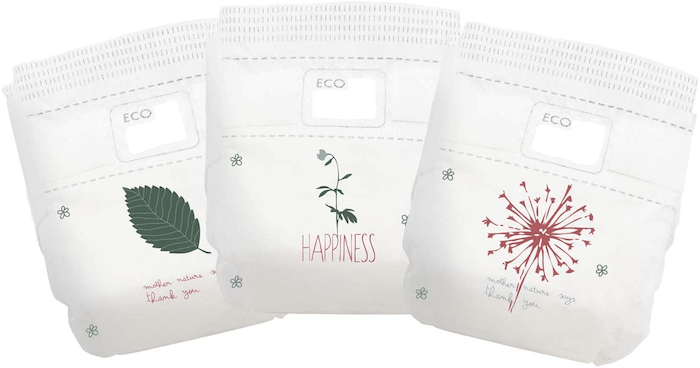 As I told you, a baby generates a huge amount of waste in the first years of life. You will find that the volume of garbage grows without you being able to do much to prevent it.
As I told you, a baby generates a huge amount of waste in the first years of life. You will find that the volume of garbage grows without you being able to do much to prevent it.
But let’s face it: the use of disposable diapers is anti-ecological, whatever we wear. It’s the most comfortable (that’s why we use them), but we should consider using the least polluting version possible . That is why the ecological part is something that we should take more and more into account.
In the case of ecological diapers, they replace plastics with natural fibers such as bamboo, which takes much less time to decompose. This we will note in the price : these diapers are more expensive but we are contributing to better care for the environment and the world in which, in the end, our son will live.
One of the great advantages of ecological diapers are the natural fibers, since they give less problems of allergies or eczema. So we not only take care of the planet, but also of the baby’s skin .
Cloth Diaper
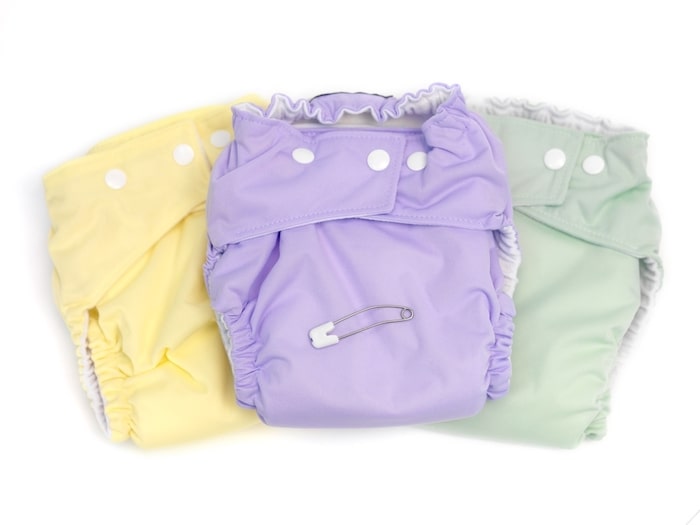 If you don’t want to generate garbage, the other option is cloth diapers . But keep in mind that there you get into a mess of washing machines that, well … you will have to assume.
If you don’t want to generate garbage, the other option is cloth diapers . But keep in mind that there you get into a mess of washing machines that, well … you will have to assume.
There are several types of cloth diapers: two-piece (on the one hand the absorbent and on the other the cover that holds it) and refillable, with a pocket for the absorbent piece, which you can also choose depending on the absorption you need.
These types of diapers are expensive, but you pay for them quickly as they are reusable . And they damage the baby’s skin less, especially in the first years of life.
Diaper Briefs
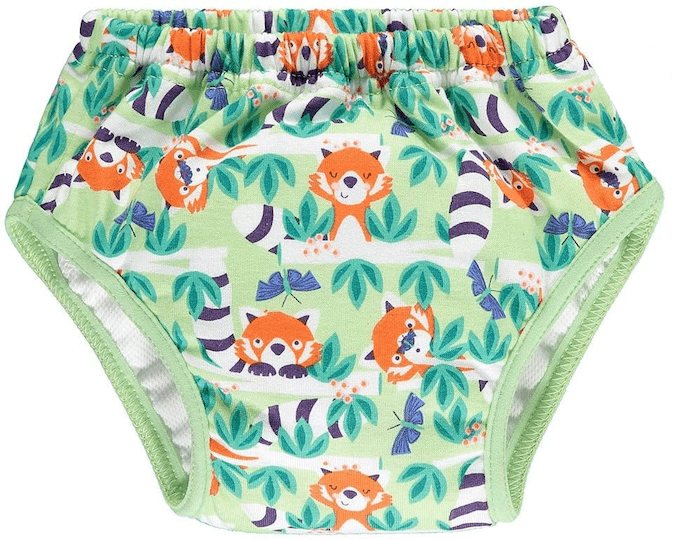 When the child is a little grown and begins to move a lot, changing the diaper can be torture: he does not sit still , he has very little patience and he does not allow himself to be cleaned thoroughly.
When the child is a little grown and begins to move a lot, changing the diaper can be torture: he does not sit still , he has very little patience and he does not allow himself to be cleaned thoroughly.
For that these diapers in the form of briefs are great, which you simply put through the legs and go up to the waist. You reduce the time of change a lot and thus you do not overwhelm either the little one or you.
In addition, it is great at that stage when the child is getting used to going to the bathroom alone. It is like a garment of underwear that the child can go up and down alone, promoting autonomy and learning , but with the peace of mind that if something escapes, they will be protected. He will use it when he goes to the bathroom and if he does not arrive on time … well, nothing happens. It changes and period.
They hold on well with a flexible elastic waistband and again are disposable.
Sleeping Diapers
It is also a diaper in the shape of a brief or brief, with an extra absorption. In this case it is used occasionally at night, for older children who still wet the bed from time to time.
It is a very discreet and comfortable diaper. The little one can put it on by himself and gives him assurance that he will not have an accident (pressure and nerves do not help when controlling pee). It goes great, for example, if you spend the night out at a friend’s house, because no one has to notice that you are wearing it.
Swimsuit Diaper
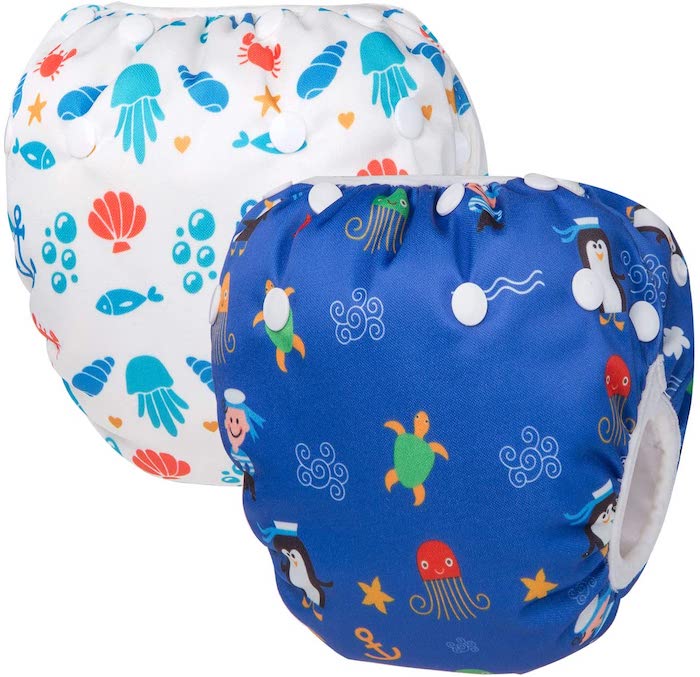 Taking your little one to the pool or beach for the first time is an exciting time.
Taking your little one to the pool or beach for the first time is an exciting time.
Enjoying the bath together is a joy, but you don’t want “surprises” floating around. Hence, this type of diapers, even if they are for occasional use, are very useful.
Normally, the baby is naked on the beach (watch out for the sun!), But it is interesting to have a few of these on hand just in case, especially if the bath will be in a public pool.
They are shaped like pants or panties and do not swell with water, which is the case with normal ones to a greater or lesser extent. Come on, a normal diaper is not valid for these situations.
They also imitate a swimsuit and have bright colors , so you don’t even notice it’s a diaper. You will have to change it from time to time though, of course.
Keep in mind that the swimsuit diaper package is small and more expensive than normal , but in reality it is something that you will rarely use, so you will not have to buy it very often.
WHAT CHARACTERISTICS MUST A BABY DIAPER MEET?
Absorption
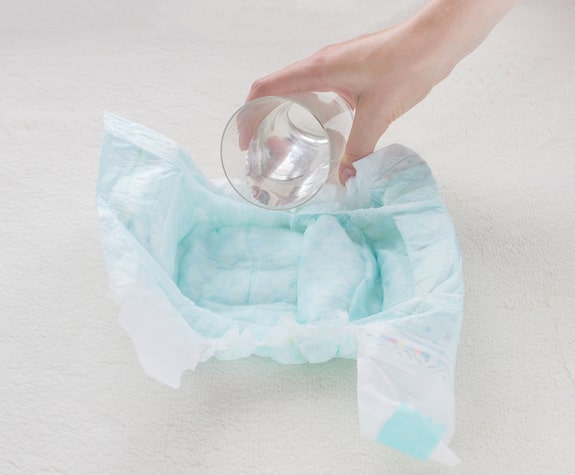 It has to be ultra-fast to avoid the contact of urine with the skin as much as possible … or the dreaded irritations arrive.
It has to be ultra-fast to avoid the contact of urine with the skin as much as possible … or the dreaded irritations arrive.
This must be combined with breathability . If the diaper is too waterproof, the baby will sweat excessively and that is not good either. It seems complicated, but most brands combine these two factors with success.
Smoothness
The surface of the diaper that is in contact with the body should be smooth to the touch. They are many hours in contact with the skin and we do not want chafing or eczema that later are difficult to heal because they are in a humid area.
Hypoallergenic
As you already know, chafing on the skin is one of the great enemies while the diaper season lasts. Children’s skin is very tender and delicate, and also many develop atopic dermatitis , something that is not serious and almost certainly will resolve itself over time … but that will require an extra effort in caring for your baby.
That is why it is very important that the diaper materials are dermatologically tested, to avoid possible irritations or allergies .
To better protect sensitive skin, some brands include ingredients like aloe vera or vitamin E , which help prevent diaper irritations.
Air Channels
Some brands include it to allow air to circulate and the baby’s bottom is always cool and dry . The interior design has grooves that can be more or less marked, so that moisture drains in and the rest is aired.
Moisture Detection
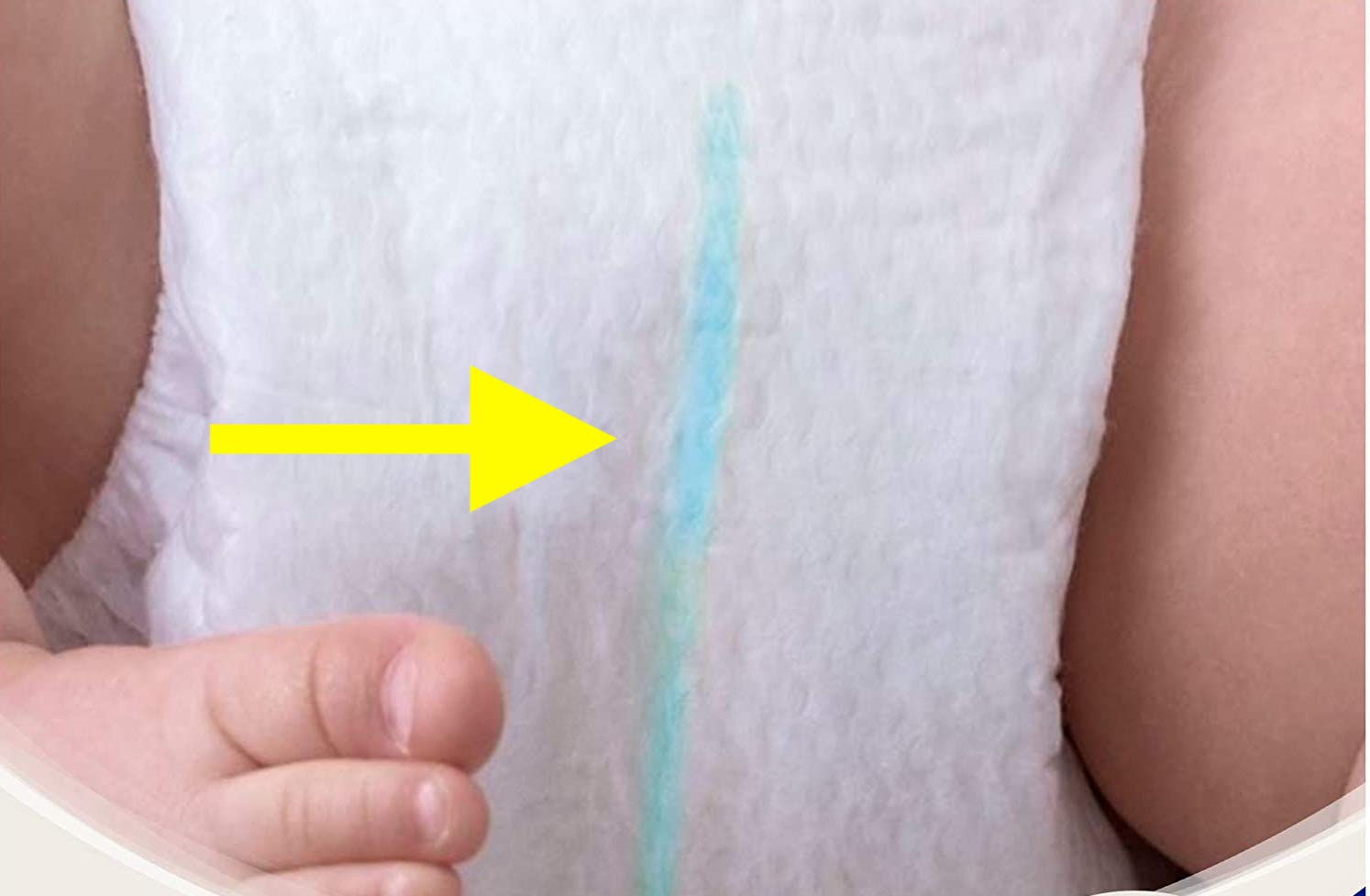 Some diapers change color when wet with pee and make it easier for you to know when it’s time to change. It is usually a band or a drawing that serves as an indicator, so you don’t have to force the velcro to touch the inside of the diaper.
Some diapers change color when wet with pee and make it easier for you to know when it’s time to change. It is usually a band or a drawing that serves as an indicator, so you don’t have to force the velcro to touch the inside of the diaper.
This system is increasingly common but it does not replace logic (if the diaper has not been changed for a long time, you know what happened in there), but it is something useful that not all brands include.
Anti-leak Barriers
As soon as the child moves or kicks it is possible that the pee escapes through the corners or folds of the diaper, so it should have some type of barrier or reinforcement, especially in the groin area .
Important
Anatomical Design
Most diapers are shaped like an “hourglass” to better fit the child’s body. The important thing is that you leave space between the legs without constricting or constricting , so that the baby feels protected but has mobility.
Reusable Stickers
The stronger the adhesives, the better. It is important that they allow you to glue and peel the strips several times so that you can see how the diaper is inside. If it is not necessary to change it, you paste it again and thus you do not throw a clean one.
Trim at the Navel
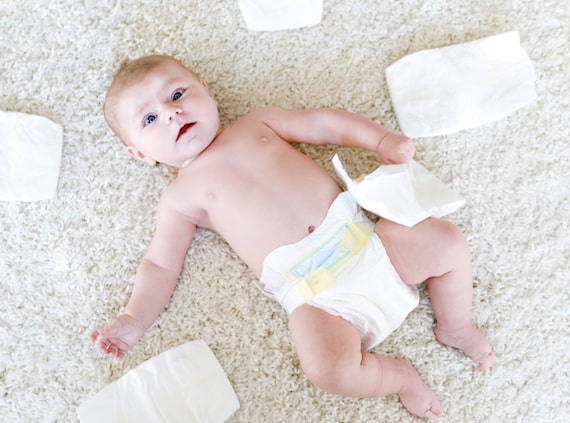 One of the most delicate areas of the baby, especially in the first months, is the navel because it is essential that it heals well. In order to avoid uncomfortable chafing, the diaper must be shaped properly.
One of the most delicate areas of the baby, especially in the first months, is the navel because it is essential that it heals well. In order to avoid uncomfortable chafing, the diaper must be shaped properly.
If he doesn’t have it, be sure to fold the diaper on so it doesn’t get in the way . Above all, do not squeeze.
Absorbs Odors
Miracles don’t do, but there are scented diapers that mitigate the smell a bit when you open the diaper. This is done by adding a small layer of perfume between the absorbent core and the outer layers, usually citrus, with lemon or orange oils.
However, our opinion is to keep an eye out for perfumes, unless you are wearing eco-friendly diapers. Keep in mind that there are no more chemicals added to the diaper, and that it will be in direct contact with your child’s skin for many hours.
HOW TO KNOW THE CORRECT DIAPER SIZE?
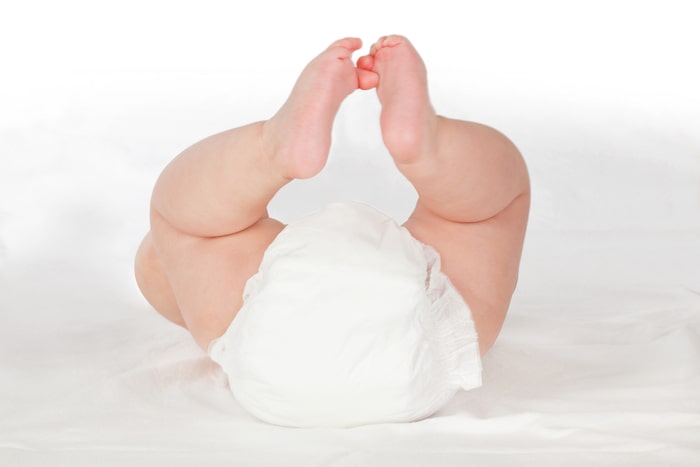
As the child grows, his needs do too. And it is important that you have the correct size controlled at all times, because a diaper that is too large will leak and one that is too small will be uncomfortable , preventing you from moving as you want and, in addition, it can leave marks.
In newborn babies or babies less than three months old, the poop is usually very liquid and the losses are a nuisance. We recommend that you use special diapers for newborns , because a size too large is a safe stain and a child with poop up to the eyebrows?
To find out if you are wearing the correct size, here is a tip . With the diaper closed, try putting two fingers between the diaper and the body: if they fit tightly but without straining, you have chosen well.
adviceBabies grow at an amazing speed. Especially in the first few months, do not stockpile large amounts of diapers because it is very possible that you will have to change sizes before wearing them. Better to buy them little by little.
Usually the size is calculated based on the weight of the baby . Each brand has its own scales, so before choosing, stop and read the manufacturer’s instructions. Our advice is that, if you change brands, buy a small package to test them and, once you see that the result is good, go to the larger packages.
As a guide, here I explain the sizes used by Huggies , one of the best-known brands:
- Size 0. For newborns, up to 3 kg. It is the softest diaper of all.
- Size 1. Up to 5 kg. They have more absorption than the previous size.
- Size 2. Up to 8 kg. They are mixed diapers for day and night, so they are ultra soft.
- Size 3. Between 6 and 10 kg. Here the air channel system is usually better developed.
- Size 4. Between 9 and 14 kg. Stronger strength and consistency.
- Size 5. Between 11 and 16 kg. They favor movement, since the little one makes attempts to stand up to walk.
HOW TO CHANGE YOUR BABY’S DIAPER?
At first it’s a mess. If you do not have experience, you are very careful because it seems that the little one is going to break, but you quickly discover that it is not so bad. Practice makes perfect, and there is nothing you can do with your eyes closed .
Most packages, even so, have very clear instructions on the outside . If you are a newcomer you can guide yourself with this, or if the little one is left in charge of someone who is not very expert on the subject … well, it will not do as well as you, but it will surely save the situation.
If you have no one to ask, there are many tutorials on YouTube that explain how to change the diaper, like this:
adviceAt each diaper change, remember to clean the area with a cotton ball, gauze or similar to avoid possible infections.
WHEN TO CHANGE YOUR BABY’S DIAPER?
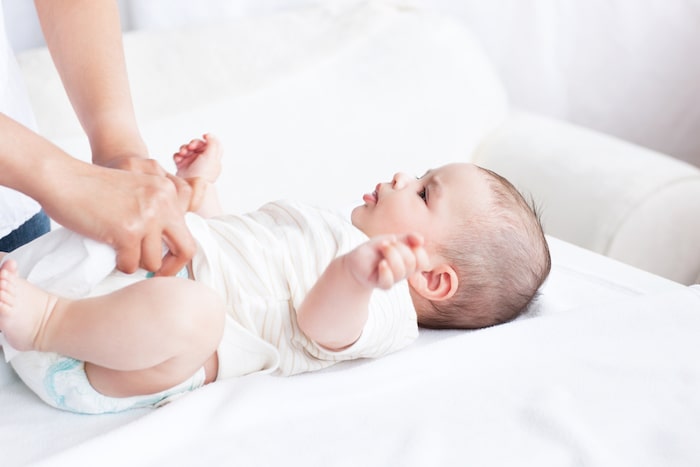 Smell is usually an infallible sign … but not the only one. Obviously, if the little one has pooped, the diaper should be changed as soon as possible. But pee is less scandalous and more irritating to the skin .
Smell is usually an infallible sign … but not the only one. Obviously, if the little one has pooped, the diaper should be changed as soon as possible. But pee is less scandalous and more irritating to the skin .
You will see that many brands are advertised as “up to 12 hours dry.” It is worth as a guideline that it is very absorbent but, in practice, we should not keep a wet diaper , and it does not matter how long it has been since the last change or how long the brand advertises.
So it’s time to change the diaper every time the little one pees, which happens up to 10 times a day for the first few weeks; normally after each feed.
Fortunately, as she grows older, she will need fewer diaper changes. At the very least, check to see if it’s needed shortly after eating, just before bedtime and before going out for a walk (if you haven’t figured it out yet, you’ll soon realize that changing her on the street is a bummer).
Some change color when they come into contact with urine , with a visible band or those little pictures that are not only to decorate, but also help us to control if it changes. It’s great for support, but in this case we are from the “old school”: in the end you will have to play to make sure.
KEYS TO SAVING WITH YOUR BABY’S DIAPERS
It’s a shame, but you can’t open the diapers at the supermarket to see if that’s what you want, so you have to try and trust the opinions of other parents (although always keep in mind that here personal taste and practice rule which is valid for you, the same is not valid for the one next door).
Many brands allow you to buy loose or smaller packages, so you can see if they are what you are looking for. But if you are faithful to a specific one (and the little one already has a more or less stable growth), the ideal is that you buy a monthly pack, which will be cheaper and thus also make sure you have a good remainder at home. Diapers fly!
WHERE TO BUY BABY DIAPERS?
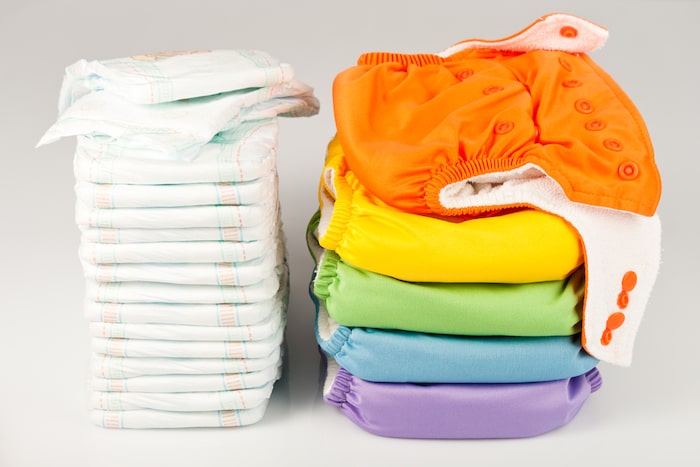 You can buy them at the supermarket or at your usual drugstore. Also in the pharmacy (although it is very possible that they will be more expensive there).
You can buy them at the supermarket or at your usual drugstore. Also in the pharmacy (although it is very possible that they will be more expensive there).
If you have an identified model and size, buying online is a great way to save money , because it is easy to find offers. In addition, they take them home and you save yourself carrying a package that is usually quite bulky.
To make it easy for you, all the diapers that I recommend on this list can be purchased online.
Best Baby Diapers : FAQ
What is a diaper and what is it for?
A baby diaper can be defined as a garment made with absorbent materials that is used to sanitize and prevent contamination of the environment due to waste from the child’s body, which does not have the ability to control them.
Diapers have evolved from the sealskin and moss worn by the Aztecs and Egyptians, to today’s super absorbent and elastic waists. Today’s diaper is smaller, fits better , keeps skin healthier, and is easier to use. But, what has been its origin and evolution?
Disposable diapers were invented almost a century ago, but it still took several decades for them to evolve to what we know today
Early records indicate that babies were already swaddled in cloth diapers or bands in many European societies and each society adopted diaper changing habits based on local conditions. The diaper used in the 1940s was a thick rectangular cotton cloth that folded in a very complex way. It was in Sweden, in that same decade, when disposable diapers made with a cellulose sheet were invented, while in the United States the plastic cover was invented to protect the exit of liquids.
In the 1960s, the cellulose fiber layer that improved absorption was introduced and better fabrics and covers were developed. But the real transformation occurred in the 70s, with the drop in prices, making them more affordable for the consumer. And in the 80s, they began to use elastics , the shape of the diaper was changed from rectangular to hourglass and, ultimately, the type of diaper that is still used today began to be used.
How does the absorption system of a diaper work?
Baby diapers are made up of two fundamental parts: the diaper core , where urine and feces are absorbed and stored, and the diaper structure , which is the covering that supports this core and fits properly around the baby’s legs.
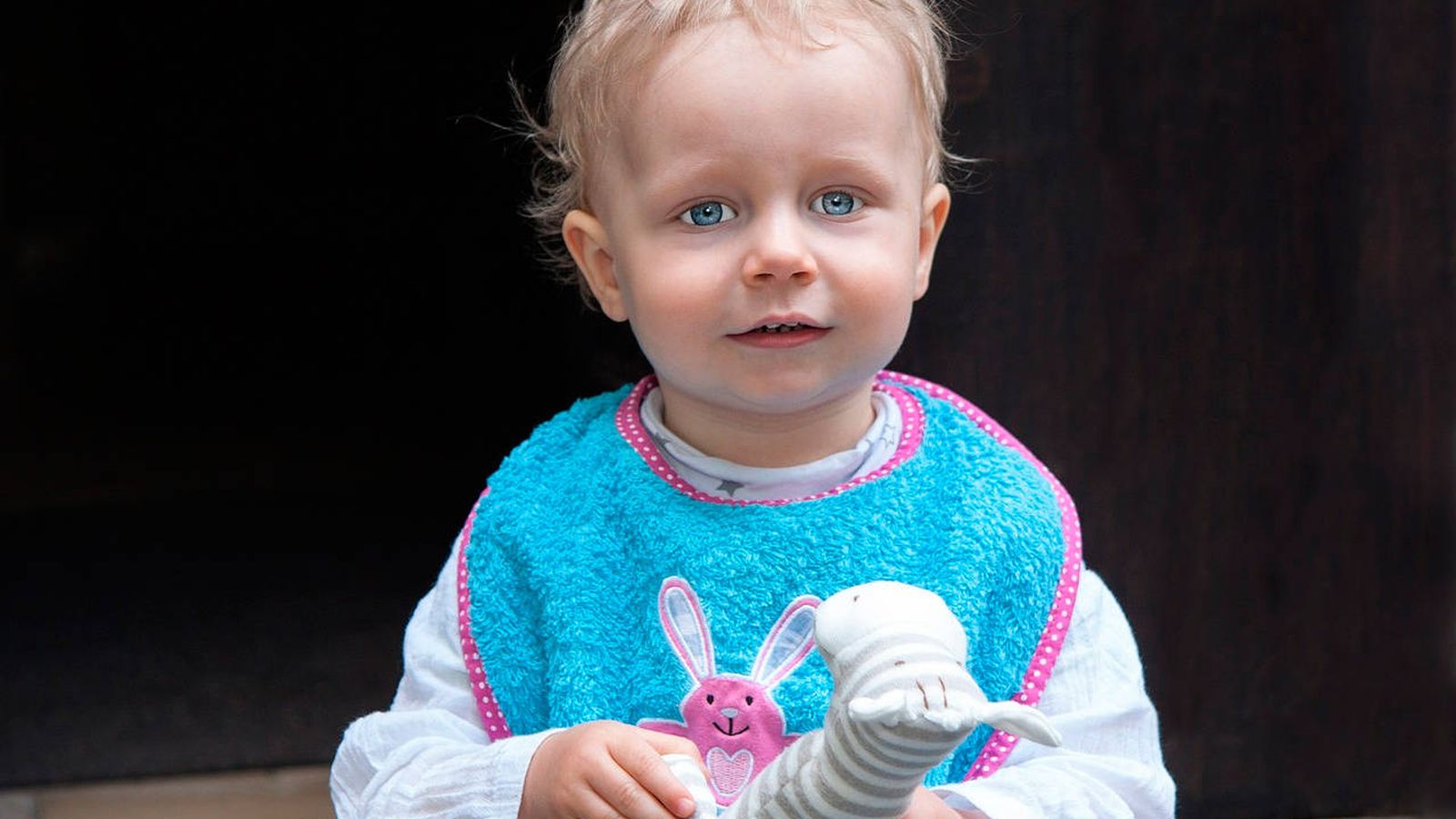
The absorption system of a baby diaper is at the core. The materials from which the diaper core is made are usually polypropylene, cellulose and a super absorbent polymer, and it is composed of three layers:
- The top layer , which is the part of the diaper that is in contact with the skin and that is specially designed to transfer fluids quickly to the core while remaining soft and dry to the touch. Some brands include skin care lotions in these top layers that protect and reduce irritation.
- The part below the top layer is the distribution or acquisition layer , which is responsible for moving fluids away from the baby’s skin and distributing them more evenly throughout the entire diaper core for better absorption. . As technology improves, less and less cellulose is used, significantly reducing the weight and bulk of the diaper, as well as having a lower environmental impact.
- And the layer where the absorption work is carried out and which is the innermost of the diaper, is the absorbent core , which is normally made of cellulose fluff pulp, which will be in charge of quickly absorbing and transferring urine to another material. where it will be trapped, the polyacrylate granules. Thanks to this layer, the baby can sit in a full diaper and keep the skin dry.
How to put on a diaper correctly?
The basic steps for changing disposable and cloth diapers are the same. Before detailing each step, it is important to make it clear that the baby should never be left unattended on a raised surface, not even for a moment.
- Wash your hands and place supplies, making sure you have everything you need on hand.
- Lay the baby on his back on the changing table.
- Unfasten the tabs of the diaper, lifting the baby’s bottom by gently grasping his ankles and lifting him up. If there is a lot of poo, the top half of the diaper can be used to gently sweep it towards the bottom half of the diaper.
- Remove the diaper and put it out of the baby’s reach .
- Thoroughly clean the baby, keeping in mind that when cleaning a girl, it should always be done from front to back to avoid possible infection.
- Place any used disposable cleaning supplies, such as wipes, on top of the soiled diaper.
- Slide a clean diaper under the baby’s bottom, making sure the tabs are on the side located under the baby’s bottom. Most diapers today have colorful markings or characters that indicate the front of the diaper.
- Apply the recommended creams or treatments to avoid rashes before closing the diaper.
- Close the diaper by pulling the front part up on the baby’s belly and open the tabs towards the fixing surface.
- Roll up the used diaper and wrap the tabs around it before putting it in a trash can or garbage bag.
- Wash your hands and the baby’s, clean the changing table.
How to avoid dermatitis in babies?
The diaper dermatitis is an acute inflammatory reaction of the skin in the diaper affecting babies between 9 to 12 months of age. What causes this serious irritation is the combination of feces and urine with the lack of perspiration. To prevent the appearance of diaper rash, just follow a few simple guidelines:
- Take care of the hygiene of the diaper area with a daily bath and cleaning after each change.
- Make frequent diaper changes, especially immediately after each bowel movement.
- Use diaper creams and ointments, which act as a barrier and protect the delicate skin in this area.
- Let the area air dry. This simple gesture will help the irritations to dry and improve considerably.
Up to what age do babies wear diapers?
It depends on each child. Some leave diapers when they are two years old (very few), others do so when they are three years old and there are also those who extend them to four. According to a study of psychomotor development, at two and a half years, only 50% of children control the sphincters ; 75% of children do so at 3 years of age; and at 3 and a half years, 95% control it.
Recommendations for the infant to leave the diapers
Before starting this process, parents must be clear that this is not a matter of “said and done. Ditching is a learning process and all learning is created through repetition, practice, and error.
In addition, these are some recommendations that should be taken into account:
- Ditching the diaper is not a matter of age or a competition. Leaving the diaper later than “normal” is not a problem for the child; therefore, it should not be assumed for the adult.
- Although it is said that summer is the best time to put off the diaper, many times it is not about seasons, but about emotions.
- Imposing the will of the parents over that of the child can cause rejection and a problem for the little one.
- Avoid rewards and punishments.
- Faced with changes such as the arrival of a sibling or the beginnings of kindergarten, it is normal for the child to return to the beginning.
With this buying guide on baby diapers it will be a little easier to choose the best diaper for the little one in the house. The goal is for you to be comfortable at all stages of your growth and by choosing the best diaper we will be giving you a great help.
Summary
Early records indicate that babies were already swaddled in cloth diapers or bands in many European societies and each society adopted diaper changing habits based on local conditions. The diaper used in the 1940s was a thick rectangular cotton cloth that folded in a very complex way. It was in Sweden, in that same decade, when disposable diapers made with a cellulose sheet were invented, while in the United States the plastic cover was invented to protect the exit of liquids.
In the 1960s, the cellulose fiber layer that improved absorption was introduced and better fabrics and covers were developed. But the real transformation occurred in the 70s, with the drop in prices, making them more affordable for the consumer. And in the 80s, they began to use elastics , the shape of the diaper was changed from rectangular to hourglass and, ultimately, the type of diaper that is still used today began to be used.





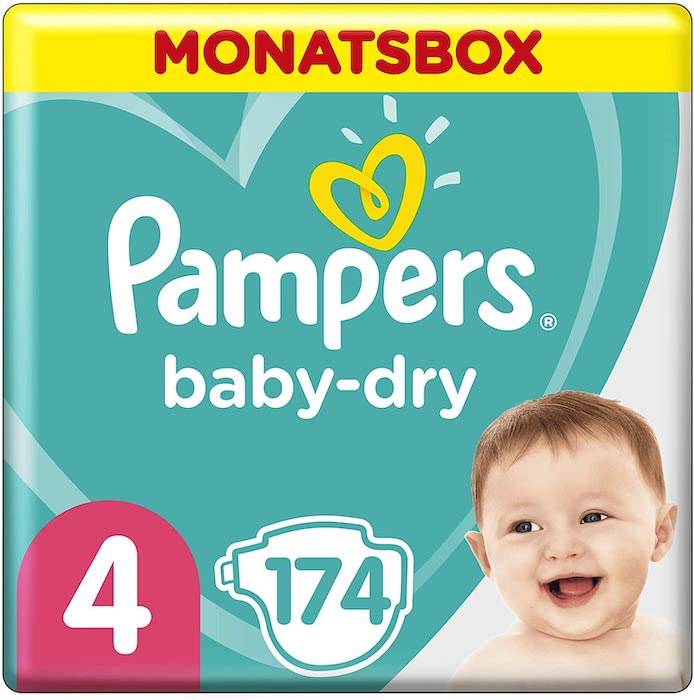
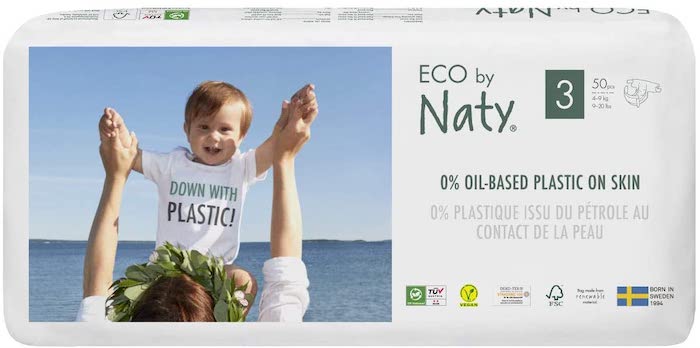
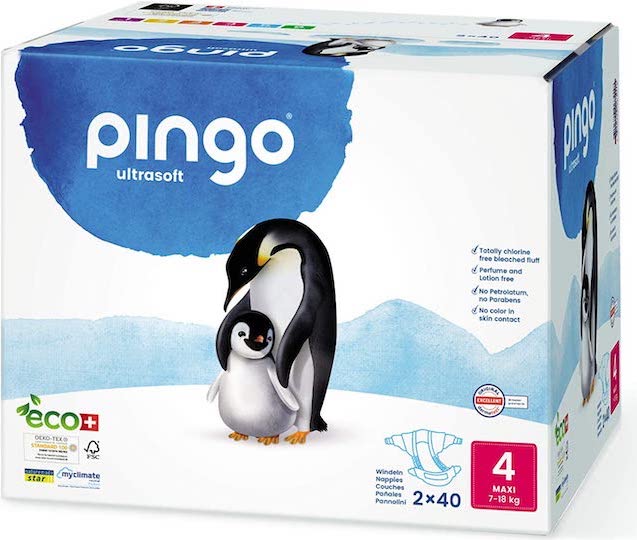
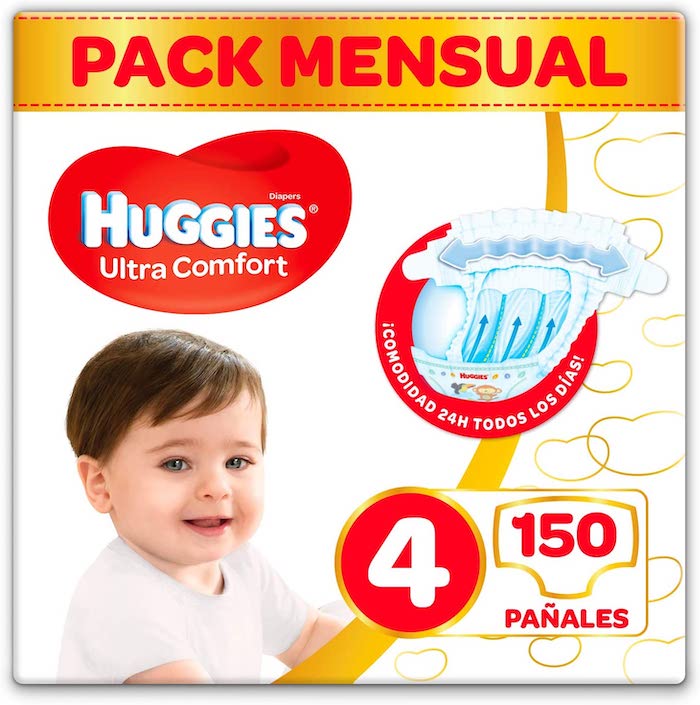

Leave a Reply